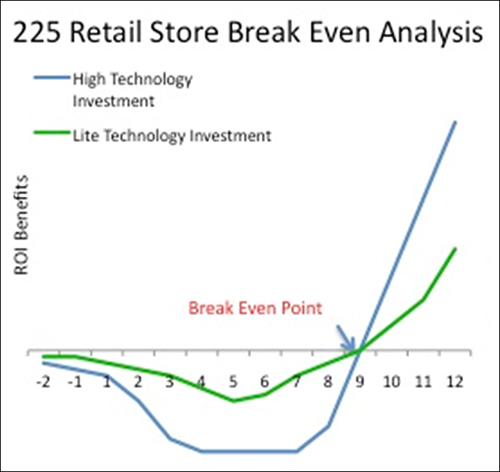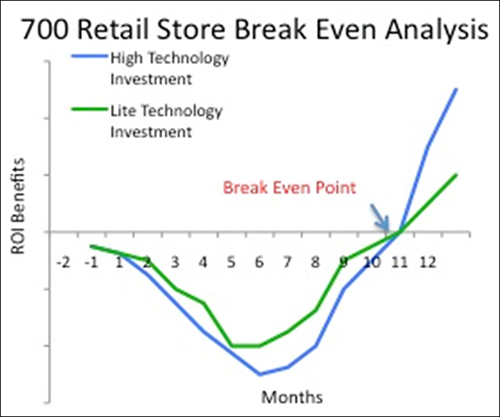Aug 14, 2016The adoption of radio frequency identification is intensifying as more and more retailers across the United States, Europe and Asia recognize how the technology is improving inventory efficiency across the supply chain.
Even though only 6 percent of apparel and footwear retailers have installed RFID systems so far, some of the most significant transformation is happening right now. The entire industry understands that the technology's ability to boost operations and enhance the customer experience is a big game-changer.

Just how big? More than 150,000 stores are anticipated to integrate the technology, using more than 30 billion tags per year during the next 10 to 15 years.
As RFID beckons, retailers are in a pitched battle against other brick-and-mortar and online competitors, using current 24-hour online fulfillment options, to eventual drop-in-on-your-lawn drone delivery.
Enhancing Physical + Digital ("Phygital") for Retail
Yet, brick-and-mortar retailing poses to boost the "phygital" world, letting consumers buy merchandise online and pick it up at the store. RFID can improve the in-store customer experience, both rivaling and complementing online shopping.
The concept is great and works well… about 80 percent of the time. Roughly 20 percent of such transactions meet with some kind of fulfillment hiccup. In extreme cases, retailers report having to tell clients that they need to wait five to nine days to receive their merchandise.
While customers click with their fingers, they'll always walk with their feet to a better experience. That is what motivates retailers to embrace RFID technology.
But there is tough sledding on the potentially rocky path that stretches out before them. All the RFID retailing brilliance in management and fulfillment that ultimately leads to happy customers has a downside that the industry already knows about: the cost.
RFID suppliers understand the "push-me, pull-you" model of meeting customer expectations and keeping capital expenditure outlays on a slow boil. Larger retailers can take the bite, but midsize and smaller players want to balance expenditures to reduce upfront costs and realize a faster return on investment (ROI).
New Purchasing Models Drive Adoption
While costs for RFID systems are not inexpensive propositions, flexible purchasing models are emerging that can satisfy demand while not breaking the bank. Here are the basic options:
Full-Purchase Model: If you have the capitalization to go all in, you can purchase software, hardware and services up front. You would then purchase RFID tags and labels following traditional sourcing models.
Software-as-a-Service (SaaS) Model: This is where much of the RFID action occurs. ChainLink Research predicted as much last year, when it wrote about the advent of "new financing models in which end-users purchase not the reader infrastructure, but rather the data flowing from it, which will reduce startup costs, enabling a low upfront, pay-as-you-go model for end-users (RFID-as-a-service)." It's simple: pay a monthly fee and purchase the tags.
As it stands, solution providers are rapidly developing options to deliver their software using both on-premises servers and various cloud options. Utilizing the cloud frees users from hardware purchases, software licensing fees, and the procurement and installation headaches that go along with them.
Bundled-in-the-Tag Model: Here, the solution costs are bundled into an extended RFID tag contract price with zero upfront costs, putting all of the solution costs as part of operations expenses. This option allows the fastest ROI and generates the fastest returns, eliminating a common barrier to RFID's adoption into retail stores.
No matter how the money will exchange hands, you want to know when your investment will pan out. As with most technology services, ROI will depend on a company's size, technology footprint, quantity of tags required, staff costs, network infrastructure and project-related costs (shipping, travel and taxes).
Positively Profitable With Any Purchasing Model
So, let's deliver the good news: No matter which purchasing model you choose, you will see a sales lift, even with a minimal technology investment.
Here are a few examples involving medium- and large-size vertical apparel retailers. The medium-sized company has 225 stores, while the large firm operates 700 locations. Using a full capital-purchase model, which includes software, services, hardware, tags and support, the midsize retailer's RFID investment reaches the break-even point eight to 10 months after the solution is taken live. Respectively, the large retailer breaks even after nine to 11 months. The range of paybacks is driven by the footprint of the deployed technology. Our experience is that if less technology is deployed, there is a lower monthly benefit than if more technology (with more upfront costs) is implemented.
In the models below, we assumed modest benefits, with lower-end-of-the-range results in the areas of sales lift, shrinkage reduction, inventory reduction and the elimination of third-party audits. We did not include any omnichannel benefits, nor did we include experienced inventory reduction benefits due to lean-principles (pull vs. push) fulfillment models.


The SaaS and bundled-in-the-tag options will produce an even more dramatic and immediate ROI due to the smaller investment, as all or most solution costs can be moved over into operations expenses. Moreover, if your company is a department store, the supplier would cover the RFID cost, so you would yield the benefits with only part of the costs.
Even in the most conservative of assessments, RFID can have a measurable impact on operational performance and is moving rapidly up technology spend lists with retailers and brand owners around the globe. As more retailers implement the technology, the inevitability of how much more RFID positively affects a company's top and bottom lines will become abundantly clear.
Dean Frew is SML Group's CTO and senior VP of RFID solutions. He leads the company's RFID technology development and go-to-market strategy for RFID tags and retail enterprise solutions.

